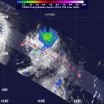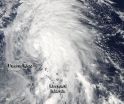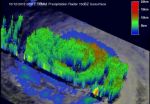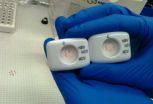(Press-News.org) (Garrison, NY) Personalized genomic medicine is hailed as a revolution that will empower patients to take control of their own health care, but it could end up taking control away from patients and limiting their treatment choices, concludes an article in the Hastings Center Report. A commentary responding to the article, by the editorial director of Health and Family at Consumer Reports, also appears in the journal.
Genomic science provides two categories of data, the authors write: pharmacogenomic information and genomic susceptibility information. Pharmacogenomic information forecasts how an individual might respond to a particular therapy. Genomic susceptibility testing predicts a patient's chances of warding off or succumbing to an environmental threat or disease.
Genomic medicine's stakeholders – including direct-to-consumer genetic testing companies, private research centers, and the National Institutes of Health – are deeply invested in promoting how this information will benefit patients. The authors call this "empowerment rhetoric." And yet the added knowledge that comes from both pharmacogenomic information and genomic susceptibility information could have a negative impact on how much power a patient really has.
The results gleaned from pharmacogenomic information could pressure patients to comply with physicians' recommendations, the authors suggest, because molecular profiling would allow doctors to give orders with more authority. "In fact, because genomic medicine generates more risk information and makes that information the key lens for approaching health and disease, patients may actually find that they have less ability to influence health care decisions and treatments," the authors state.
The virtues of genomic susceptibility information could also go awry. First, because disease prevention relies heavily on lifestyle changes, responsibility is shifted from doctor to patient. Patients who don't make the "right" choices could be deemed irresponsible, the article says. Second, genomic information can for the time being only reveal the health risks of groups of people. Rather than provide individualized assessments, it classifies people into "genetic superfamilies." The authors argue that "population classification schemes based on racial and ethnic categories can be actively disempowering for individuals, by encouraging potentially prejudicial associations between their group affiliations and health care risks."
Patient empowerment is marketed as a paradigm shift because it puts medical data in the hands of the consumer, not just the doctor. But the authors conclude that the focus on empowerment could clash with the reality of what patients are willing or able to do with the information they receive. "The idea of patient empowerment may run up against not only the limits of patients' control over their health, but also the limits of patient control over health care systems," the article says.
The authors are Eric T. Juengst, director of the Center for Bioethics and professor in the Departments of Social Medicine and Genetics at the University of North Carolina, Chapel Hill; Michael A. Flatt, a doctoral candidate in sociology at Case Western Reserve University; and Richard A. Settersten, Jr., professor of social and behavioral health sciences and endowed director of the Hallie E. Ford Center for Healthy Children and Families in the College of Public Health and Human Sciences at Oregon State University.
In a commentary on the article, Ronni Sandroff, editorial director of Health and Family at Consumer Reports, acknowledges that pharmacogenomics could take control away from a patient if a health insurance company opted not to cover a medicine that was shown to work infrequently in people with a particular genetic makeup. But even an increase in patient empowerment can have downsides if it shifts the responsibility for health care to patients and stigmatizes people who do not, or cannot, make the "right" health choices. Sandroff notes that the greatest challenge in preventive medicine is getting people to eat less, exercise more, and reduce stress. Whether or not genetic susceptibility information will actually empower patients by propelling them toward healthier lifestyles is unknown. "This is a question that needs more serious study," she writes.
Still, Sandroff says that consumer participation in genetic health research – "a new and growing factor" – could help advance scientific knowledge. "That makes it something that professionals should be wondering how to enhance and encourage, rather than fear," she writes.
INFORMATION: END
Tropical Storm Maria was born in the western North Pacific Ocean and has a large area of moderate rainfall, as NASA's TRMM satellite revealed today, Oct. 15. NASA's TRMM satellite noticed that most of Maria's rainfall was occurring northeast of the storm's center. Maria is the twenty-third tropical cyclone of the western North Pacific season.
When NASA's Tropical Rainfall Measuring Mission (TRMM) satellite passed over Tropical Storm Maria on Oct. 15 at 1329 UTC (9:29 a.m. EDT) light to moderate rainfall was occurring northeast of the center and falling at a rate between ...
Tropical cyclones seem to love forming over weekends, Rafael formed over the weekend in the Atlantic, Anais in the Southern Indian Ocean and Hurricane Paul in the eastern Pacific Ocean. NASA's Terra satellite kept on top of Paul, however, and provided forecasters with a visible look at the newborn storm.
Paul formed on Oct. 13 at 5 p.m. EDT about 660 miles (1,065 km) south-southwest of the southern tip of Baja California, near 14.0 North and 113.6 West.
The Moderate Resolution Imaging Spectroradiometer (MODIS) instrument aboard NASA's Terra satellite captured a visible ...
While the Leeward Islands continue to get battered by Tropical Storm Rafael, a Tropical Storm Watch is posted for Bermuda as Rafael continues to move through the eastern Atlantic Ocean. NASA's Aqua satellite passed over Rafael on Oct. 14 and noticed the bulk of showers and thunderstorms were being pushed north and east of the storm's center.
The Moderate Resolution Imaging Spectroradiometer (MODIS) instrument aboard NASA's Aqua satellite captured a visible image of Tropical Storm Rafael in the Atlantic Ocean on Oct. 14, 2012 at 1720 UTC (1:20 p.m. EDT). The image clearly ...
Tropical Cyclone Anais, the first tropical cyclone of the Southern Indian Ocean's tropical cyclone season, has strengthened over the weekend of Oct. 13 and 14 and by Oct. 15, the storm was packing sustained winds near 100 knots (115 mph/185 kph).
The Moderate Resolution Imaging Spectroradiometer (MODIS) instrument aboard NASA's Aqua satellite captured a visible image of Tropical Cyclone Anais off Madagascar on Oct. 15 at 0940 UTC (5:40 a.m. EDT) and revealed an eye. Multi-spectral satellite imagery showed that convection has continued to decrease around Anais' ragged ...
Typhoon Prapiroon has been meandering in the western North Pacific Ocean over the weekend of Oct. 13 and 14, and NASA's TRMM satellite was able to identify where the strongest rainfall was occurring in the storm.
The Tropical Rainfall Measuring Mission (TRMM) satellite passed directly above weakening Typhoon Prapiroon in the western Pacific Ocean on October 12, 2012 at 0741 UTC (3:41 a.m. EDT). At that time, Typhoon Prapiroon was a powerful category two typhoon on the Saffir-Simpson scale with winds slightly less than 95 knots (~109 mph).
A 3-D image of the storm was ...
Montreal October 15, 2012 – Timely screening and diagnosis is critical to the success of new treatments and ultimately to the survival of hepatitis C patients. A new study led by the Research Institute of the McGill University Health Centre (RI MUHC) is the first to show that hepatitis C rapid and point of care tests with a quick turnaround time are highly accurate and reliable as conventional first-line laboratory tests. This head-to-head analysis, published in the current issue of the Annals of Internal Medicine, will lead to changes in screening practices and ultimately ...
The genomes of birds are riddled with DNA sequences from viruses, according to a study to be published on October 16 in mBio®, the online open-access journal of the American Society for Microbiology. Analysis of these viral sequences, known as endogenous retroviruses (ERVs), can provide insights into how both hosts and viruses have evolved over the eons.
"We examined the evolution of avian retroviruses on the basis of their fossil remnants in the three avian genomes that have been completely sequenced," write the authors from Johns Hopkins University and Uppsala University, ...
Researchers at Moffitt Cancer Center and colleagues at the University of South Florida; Duke University; Johns Hopkins University; the Brazilian National Cancer Institute; and the Rio de Janeiro Federal Institute of Education, Science and Technology have discovered that an intricate system to repair DNA damage called the "DNA damage response" (DDR) contains previously unknown components, including proteins that could be targeted as sensitizers for chemotherapy. Some of these targets may already have drugs available that have unrecognized uses in cancer therapy, said the ...
Three in 10 patients receiving a kidney transplant require readmission to the hospital within 30 days of discharge following surgery, according to a Johns Hopkins analysis of six years of national data.
The findings, published online in the American Journal of Transplantation, suggest more needs to be done to manage patients outside the hospital to keep them from costly and potentially preventable return visits. Readmissions are said to cost the U.S. health care system $25 billion a year. The Centers for Medicare and Medicaid Services has begun the process of decreasing ...
In addition to the prestigious honor of being awarded 'Best of Rhode Island' Andre Blais Photography was also nominated as a finalist in the 'Top Photographers Worldwide' competition, placing within the top 100 nominations.
The awards are an annual competition recognizing some of the most popular wedding vendors at a local, national and international level. Each vendor had their own vote page that showed the category they were nominated for and a description of their business. There were 30 categories in total including everything from Best Accessories to Best Wedding ...





